 W
WHunting is the practice of seeking, pursuing and capturing or killing wild animals. Hunting wildlife or feral animals is most commonly done by humans for meat, recreation, to remove predators that can be dangerous to humans or domestic animals, to remove pests that destroy crops or kill livestock, or for trade. Many non-human species also hunt.
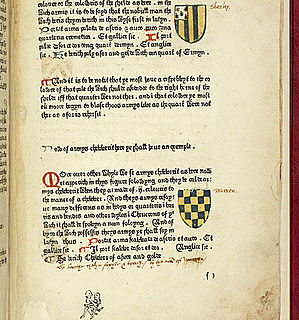 W
WThe Book of Saint Albans is the common title of a book printed in 1486 that is a compilation of matters relating to the interests of the time of a gentleman. It was the last of eight books printed by the St Albans Press in England. It is also known by titles that are more accurate, such as "The Book of Hawking, Hunting, and Blasing of Arms". The printer is sometimes called the Schoolmaster Printer. This edition credits the book, or at least the part on hunting, to Juliana Berners as there is an attribution at the end of the 1486 edition reading: "Explicit Dam Julyans Barnes in her boke of huntyng."
 W
WDesert kites are constructions aimed at trapping game animals, found in the Middle East.
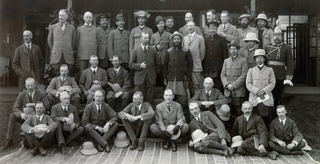 W
WOver 18–28 December 1911, King George V of the United Kingdom took part in a hunt in the Kingdom of Nepal as part of an expedition organised by the Prime Minister of Nepal, Chandra Shumsher Jang Bahadur Rana. The king had wanted to visit Nepal in 1905 but due to the ongoing 1899–1923 cholera pandemic, he could not enter the region. The crew killed 39 tigers, 18 rhinoceros, 4 bears, and several porcupines and leopards over the course of the 10-day expedition. During the hunt, the king knighted Chandra Shumsher with the Royal Victorian Order.
 W
WThe Grand Veneur de France or Grand Huntsman of France was a position in the King's Household in France during the Ancien Régime. The word French "veneur" (huntsman), derives from the Middle French word "vener", , from which also was derived the archaic English words "venerer" (hunter) and "venery". The position is sometimes grouped with the Great Officers of the Crown of France. The position was one of the "Great Offices of the Maison du Roi". The position was equivalent to that of the "Grand Master of the Hunt" in certain European royal households.
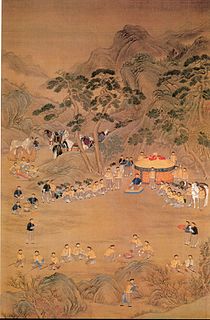 W
WThe imperial hunt of the Qing dynasty was an annual rite of the emperors of China during the Qing dynasty (1636–1912). It was first organized in 1681 by the Kangxi Emperor at the imperial hunting grounds at Mulan (modern-day Weichang Manchu and Mongol Autonomous County, near what would become the summer residence of the Qing emperors at Chengde. Starting in 1683 the event was held annually at Mulan during the autumn, lasting up to a month. The Qing dynasty hunt was a synthesis of earlier Chinese and Inner Asian hunting traditions, particularly those of the Manchus and Mongols. The emperor himself participated in the hunt, along with thousands of soldiers, imperial family members, and government officials.
 W
WKhosrow parviz hunting ground or Tape-ye-moradhasel is and ancient Sasanid complex in north of kermanshah city in west of Iran.
 W
WThe Livre de chasse is a medieval book on hunting, written between 1387 and 1389 by Gaston III, Count of Foix, also known as Fébus or Phoebus, and dedicated to Philip the Bold, Duke of Burgundy. Fébus was one of the greatest huntsmen of his day and his treatise became the standard text on medieval hunting techniques. It was described by scholar, Hannele Klemettilä, as "one of the most influential texts of its era".
 W
WThe Mammoth spear thrower is a spear thrower in the form of a mammoth, discovered at the "Montastruc rock shelter" in Bruniquel, France. It is from the late Magdalenian period and around 12,500 years old. It now forms part of the Christy Collection in the British Museum, and is normally on display in Room 2. Between 7 February – 26 May 2013 it was displayed in the exhibition at the British Museum Ice Age Art: Arrival of the Modern Mind.
 W
WJuan Mateos was a horseback hunter and the principal arbalist of Philip IV of Spain. In 1634, he authored Origen y dignidad de la caça, a hunting treatise dedicated to the Count-Duke of Olivares. In his dedication he said, "I write solely what I have done, and what I have seen; and what I have seen, do."
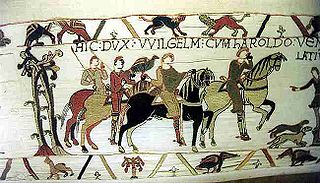 W
WThroughout Western Europe in the Middle Ages, humans hunted wild animals. While game was at times an important source of food, it was rarely the principal source of nutrition. Hunting was engaged by all classes, but by the High Middle Ages, the necessity of hunting was transformed into a stylized pastime of the aristocracy. More than a pastime, it was an important arena for social interaction, essential training for war, and a privilege and measurement of nobility.
 W
WMela shikar is a traditional method of capturing wild elephants for captive use.These methods get employed in Burma, Thailand,Vietnam,Laos and Cambodia and in Assam in India The process involves lassoing a wild elephant from the back of a trained one, called a koonki. This practice is prevalent in the northeastern part of India, especially in Assam, and is one of the methods seen in ancient India. Other traditional elephant capture methods include: khedda, byle shikar, snaring, pit method, and decoying by using a female koonki to lure a male elephant. Mela shikar used to be organized twice a year - after Durga Puja and during Bihu.
 W
WHunting is the practice of seeking, pursuing and capturing or killing wild animals. Hunting wildlife or feral animals is most commonly done by humans for meat, recreation, to remove predators that can be dangerous to humans or domestic animals, to remove pests that destroy crops or kill livestock, or for trade. Many non-human species also hunt.
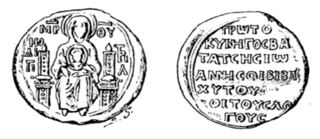 W
WThe prōtokynēgos was a Byzantine court office and honorific title in the 13th–15th centuries, who was the chief huntsman of the Byzantine emperors.
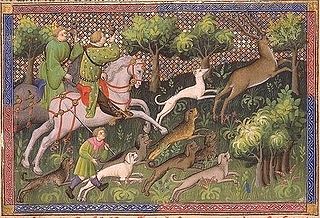 W
WRache, also spelled racch, rach, and ratch, from Old English ræcc, linked to Old Norse rakkí, is an obsolete name for a type of hunting dog used in Great Britain in the Middle Ages. It was a scenthound used in a pack to run down and kill game, or bring it to bay. The word appears before the Norman Conquest. It was sometimes confused with 'brache', which is a French derived word for a female scenthound.
 W
WA spear-thrower, spear-throwing lever or atlatl is a tool that uses leverage to achieve greater velocity in dart or javelin-throwing, and includes a bearing surface which allows the user to store energy during the throw.